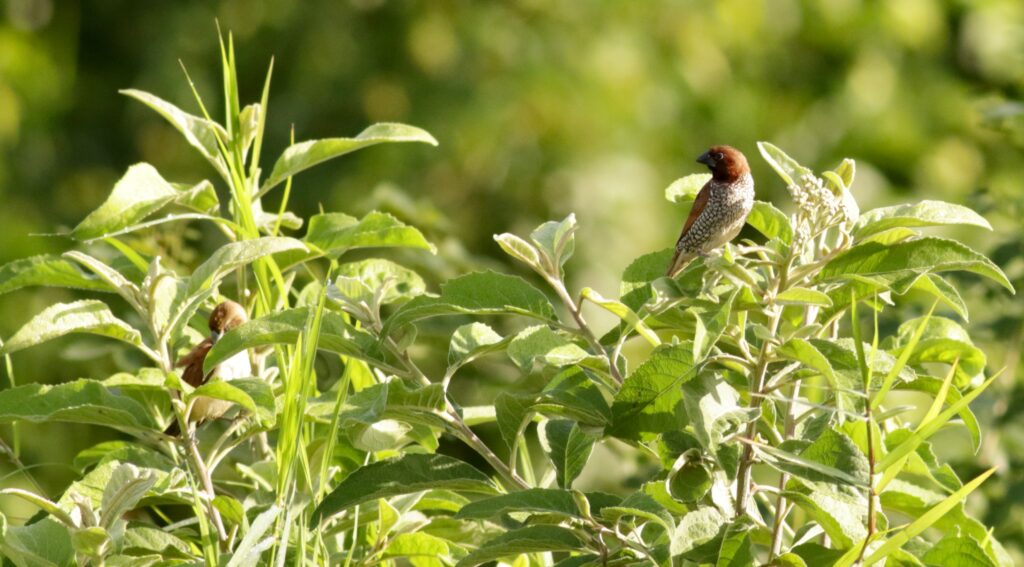We were fascinated by the prehistoric look of iguanas. They were a common sight around the grounds of the resort as they basked on a sunny tree limb or lawn.




There was an abandoned property next to the resort. The beach there was frequented by Laughing Gulls and a few shorebirds.









In the scrubby growth that bordered the beach, we were excited to find a pair of Summer Tanagers in the distance. They were so far away that our photos are only good for identification.
Summer Tanagers: the female is yellow whereas the male is red.




We also spotted a Green Heron and a Scaly-breasted Munia, again at a distance. The Scaly-breasted Munia is a small finch that is native to southern Asia. After they were imported as cagebirds, escapees established wild populations.


On rocky shores on the opposite side of the island, we found other shorebirds in their non-breeding plumage and rather comical-looking Royal Terns.





Brown Pelicans posed in the city harbour – a juvenile and an adult.


We arranged to visit Punta Sur Eco Park. At that time, it was undeveloped. It seems now to have been transformed into a tourist destination rather than a nature preserve. We could see that there was a lot of bird life there, but the birds were very far away.


On the left, a White Ibis wading, on the left a far-off egret.


Here, an Osprey lands on its nest.

Maginificent Frigatebirds soared overhead.


We were used to seeing Turkey Vultures at home, identified by the lighter trailing edge of their flight feathers and way that they teetered when soaring in flight. (We were told that “Turkey Vultures rock.”)

We saw more Black Vultures than Turkey Vultures in Cozumel. They were often perched on roofs. In flight, they display white patches on the ends of their wingtips.



Great-tailed Grackles frequented the dining areas around the resort, watching for a handout or dropped food.



Bananaquits are small, active birds that feed on nectar and fruit. We often saw them foraging in the trees and blossoms.





Yucatan Woodpeckers look similar to Red-bellied Woodpeckers, but have yellow feathering at the base of their bills.


The Red Postman butterfly is also know as the Small Postman, the Red Passion Flower butterfly, or the Crimson-patched Longwing.

Best Bird Photos from Cornell
Click on the green links to view Cornell’s best photos of 2024 as described on the Cornell website: “For our 2024 photo essay we’re celebrating wonderful photos in five themes: the high-speed action of Thrill of the Chase, a look at our avian neighbors with Birds in Built Environments, a sampler platter of food types with Feeding Time, spectacular poses in Birds Never Cease to Amaze, and a peek at some of the world’s rarest birds with Rare Glimpses. In the final section, we say thank you to all the photographers who make the Macaulay Library archive such a uniquely rich resource.”